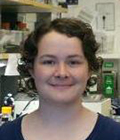
"Developing an in vitro system for the study of CAIRE-binding transcription factors"
Host lab: Roel Nusse
Stanford University
Recent studies have shown an upregulation of Wnt expression in a number of different tissues following injury. A novel injury responsive enhancer, which we refer to as CAIRE (cis-acting injury response element), is proposed to regulate the transcriptional activation of Wnts following injury in multiple tissues. A key question in the role of CAIRE is which transcription factors (TFs) bind to CAIRE. In order to address this question, we are using a two-pronged approach to both identify candidate TFs and to verify their role in CAIRE activation in vitro. To study CAIRE in vivo, we use transgenic reporter mice in which CAIRE activation following injury drives expression of either GFP or LacZ. We consider these cells to be “CAIRE positive”.
To identify candidate TFs we will use RNA-seq as a method to characterize the entire transcriptome of CAIRE-positive cells. This will provide a list of all TFs expressed by the cells as well as reveal those that undergo transcriptional changes following injury. By comparing the RNA-seq data across different CAIRE-positive cells obtained from different tissues against a list of predicted binding factors obtained via bioinformatic analysis, we will narrow down the list of candidate TFs to a few key possibilities.
To further screen these possible candidate TFs and understand their role in CAIRE regulation following injury we will develop an in vitro assay. Specifically, we require a model that recapitulates the CAIRE response following injury and is accessible to lentiviral infection. As the trachea is one tissue where CAIRE positive tissues are found following injury, we will look at mouse tracheal epithelium cultures (MTEC) as a potential in vitro injury model. These cultures provide a two-dimensional system that can be easily infected with lentiviruses. By establishing MTECs with cells harvested from CAIRE reporter animals, my goal is to develop an injury model that allows for predictable activation of the CAIRE reporter as observed in vivo. By infecting the MTEC injury system with lentiviral constructs containing CAIRE reporters with mutated candidate TF binding domains, I will further characterize the role of candidate TFs in CAIRE activation and, in turn, Wnt-mediated injury response.